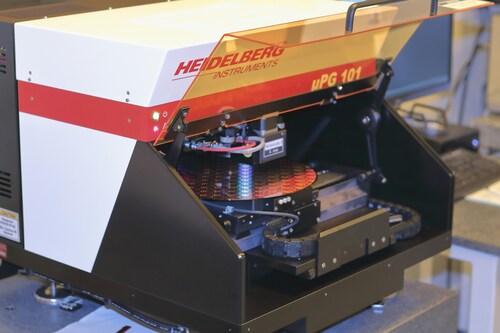In the realm of material processing and fabrication, precision and efficiency continually drive innovation. The ongoing quest to enhance these qualities has ushered in a new era of cutting-edge technology: the rise of the fiber laser machine. These advanced systems have revolutionized industrial cutting methods, offering unparalleled accuracy, speed, and flexibility. In this article, we will delve into how fiber laser machines are transforming the manufacturing landscape and examine their impacts on various industries.
The Emergence of Fiber Laser Technology
Since the inception of laser cutting in the 1960s, the technology has undergone tremendous evolution. Traditional methods like CO2 lasers were the industry standard for many years, but as technology advanced, fiber laser systems emerged as a superior alternative. Leveraging a solid-state laser created through an optical fiber doped with rare-earth elements such as erbium, ytterbium, or neodymium, fiber lasers have reshaped the capacities of laser cutting machines. The result is a more robust, compact, and power-efficient solution.
Advantages of Fiber Laser Cutting Machines
The transition to fiber laser cutting comes with many advantages. Firstly, due to the fiber laser’s wavelength, these machines can cut reflective metals without the risk of back reflections damaging the system. This opens up a range of possibilities for working with materials like aluminium, brass, and copper, which were previously challenging. Furthermore, fiber lasers have minimal moving parts, which translates into lower maintenance costs and downtime. These factors, combined with higher cutting speeds and energy efficiency, make fiber laser machines an investment that quickly pays for itself.
Fiber Lasers in Manufacturing and Beyond
The surge of fiber laser technology has permeated various sectors, transforming manufacturing workflows. The precision it offers allows for intricate designs and close nesting of parts, leading to reduced material waste. Industries such as aerospace, automotive, electronics, and medical devices rely on the accuracy and reliability provided by fiber laser machines to produce high-quality components with tight tolerances. This is pivotal for applications where precision can mean the difference between success and failure. From cutting complex flight-critical parts to crafting delicate medical instruments, fiber lasers deliver the meticulous detail required.
Speed and Efficiency Take Center Stage
Speed is another significant factor contributing to the popularity of fiber laser cutting machines. With the ability to operate at higher speeds than traditional cutting technologies, these machines reduce turnaround times, allowing manufacturers to complete more orders in less time. This efficiency is not only beneficial for large-scale production runs but also for smaller, custom jobs where on-demand production is key. The quick setup time and ease of operation further streamline the process, ensuring projects can move swiftly from design to completion.
Adaptability of Fiber Laser Technology
The versatility of fiber laser machines cannot be overstated. They can be easily integrated into existing production lines or function as standalone units. The technology is adaptable to various cutting needs, from flat sheet metal to tube cutting, and can handle a wide range of materials and thicknesses. Additionally, the ability to adjust the laser’s power and focus allows operators to fine-tune the cutting process for each specific material, resulting in a clean, burr-free edge and minimizing the need for post-processing.
The Environmental Edge
Environmental consciousness is becoming more critical in manufacturing, and fiber laser machines offer several eco-friendly advantages. Their energy efficiency means lower power consumption, reducing the carbon footprint of operations. Additionally, because they generate less waste and require fewer consumables than traditional cutting technologies, they contribute to more sustainable manufacturing practices. This is an increasingly important factor for businesses seeking to maintain an edge in a world where customers and regulations are more focused on environmental impact.
Future-Proofing with Fiber Laser Cutting
As industries evolve, the flexibility to adapt to changing demands is essential. Fiber laser machines are well-positioned to grow with businesses, thanks to their scalability and compatibility with automation. Coupled with advancements in software and robotic assistance, these tools are ready to take on the complexities of future production needs. By investing in fiber laser technology, companies not only increase their current capabilities but also secure a path for growth and innovation.
Challenges and Considerations
Despite their many benefits, fiber laser machines do require a significant initial investment. Companies must evaluate their specific needs against the machine’s cost and potential returns. Training for operators is another consideration; as with any advanced technology, personnel must be competent in navigating the complexities of the machine to maximize its potential. However, with a strategic approach and long-term outlook, the benefits far outweigh these challenges.
Case Studies of Success
Across industries, businesses harnessing fiber laser technology report remarkable gains in productivity and quality. For example, in the automotive sector, where precision is crucial, companies have utilized fiber lasers to create lighter, more energy-efficient components, contributing to the industry’s shift toward sustainability. In the medical field, the need for absolute precision in instrument manufacturing has been supremely met by the fine control offered by fiber laser cutting.
Conclusion: Fiber Laser Machines Leading the Way
In conclusion, the rise of fiber laser machines is not a fleeting trend but a tangible shift in manufacturing paradigms. These systems bring forth a new age of precision, efficiency, and adaptability in material processing. As industries continue to seek competitive advantages and ways to innovate, the fiber laser machine stands as a beacon of technological progress, driving businesses towards a future where the limits of precision and efficiency are continually expanding.
For any enterprise looking to elevate their production capabilities and embrace cutting-edge technology, considering the adoption of a fiber laser machine is a strategic move with the promise of transforming their potential into tangible success.



